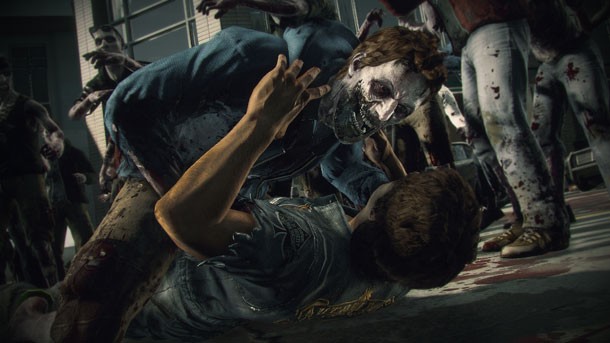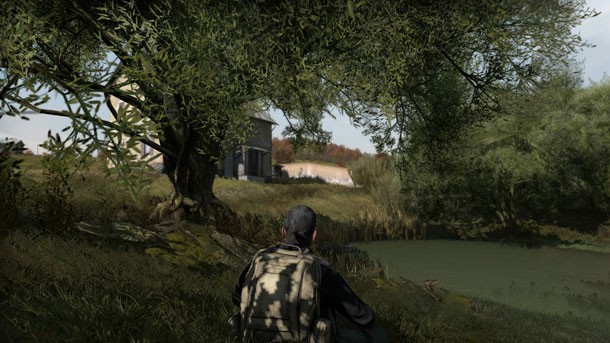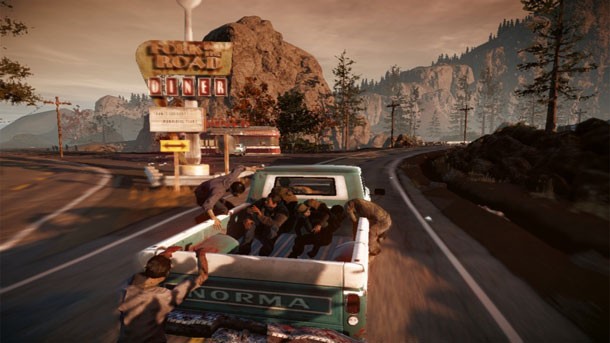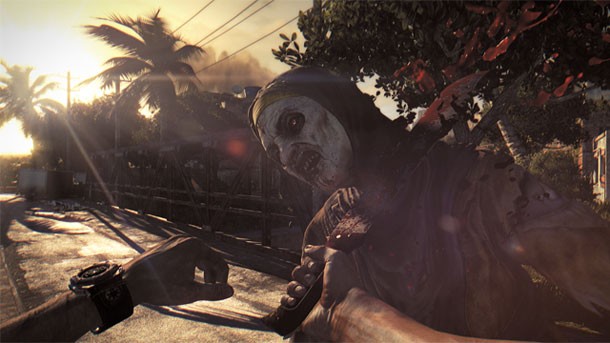Subscribe today to receive the next issue of Game Informer, featuring the Most Anticipated Games of 2026!
Road To Extinction: Where Zombie Games Are Heading

Zombies are popular. Brad Pitt is battling waves of them in World War Z, Dead Rising 3 is one of the Xbox One’s main selling points, and The Walking Dead franchise is succeeding in comics, television, and games. State of Decay has become the fastest-selling XBLA game of all time, the creator of Garry’s Mod is making a zombie game, and the DayZ standalone title is coming along smoothly. You’d think genre fatigue would set in, but then Naughty Dog unleashes its grim post-apocalyptic masterpiece, The Last of Us, which features cannibalistic, fungus-infected humans. The necrotic locomotive is charging full steam ahead, but where is it going?
Where We’ve Been
Resident Evil popularized survival-based gameplay with shuffling zombies, limited ammo, and sparse healing items. Capcom’s other undead darling, The Dead Rising series, kicked off the open-world zombie genre with an open mall environment reminiscent of George Romero’s zombie-defining Dawn of the Dead (so reminiscent that the box had a disclaimer). Series protagonists Frank West and Chuck Greene were racing the clock in their respective games, instilling an omnipresent sense of urgency and dread despite the comical violence.
Not much evolved in the way of open-world games with zombies until Minecraft. Okay, Minecraft features giant spiders and exploding creepers as well as zombies, but the nocturnal enemies remind me of the late Richard Matheson’s enemies in I Am Legend. In the book, protagonist Robert Neville forages for supplies and fortifies his home during the day so he can stave off undead attacks during the night. Minecraft’s early game can be as terrifying as Neville’s day-to-day routine. Players are left without shelter when the game begins. New players are too busy harvesting lumber and fumbling with the game’s crafting system to notice the setting sun. During my first experience with the game, zombies and other monsters began their attack before I could build my home. I avoided death by digging a hole in the ground and waiting it out until sunrise. The primal experience of burying myself in the ground to avoid groaning predators stuck with me.

After Minecraft, the ARMA II mod DayZ came along. Like Minecraft, players are dropped into a dangerous world without guidance, left on their own to find supplies and avoid deadly creatures. The mod is rough around the edges, but players dig the hardcore survival elements in bleak, expansive world. Unpredictable interactions with other players foster emergent stories where players aid or murder each other. The mod was so successful that creator Dean Hall has been hard at work on a polished standalone version of DayZ.
Other games have emerged with similar concepts to DayZ. The WarZ, recently renamed Infestation: Survivor Stories, is a copycat that has garnered negative reactions from gamers decrying rampant hacking and poor community support. State of Decay is a flawed-but-fun 360 downloadable game that offers a more accessible, single-player survival experience. The game’s success points to players’ eagerness for an open-world zombie game that shows you the ropes then leaves you to fend for yourself in an infested world where death and survival carry real weight.

My coworkers have shared war stories from State of Decay that remind me of the harrowing tales DayZ players told during the game’s peak popularity. However, State of Decay’s single-player adventure, approachable control scheme, and support from Microsoft helped it find its way into more players’ hands. I believe State of Decay’s success proves console owners want a hardcore, open-world survival experience.
Where We’re Going
A while back, I wrote an article pointing out some elements I’d love to see in an open-world zombie game. State of Decay hit several of these on the head, such as a tutorial, zombie variety, progression, scavenging, and the elimination of griefers. State of Decay could have benefited from unique nighttime hazards and better core gameplay.
Techland, the developer of the innovative Dead Island, is focusing on some areas where State of Decay suffered with Dying Light. Dead Island introduced weighty first-person combat, co-op, and RPG-like progression into an open-world, something the studio is continuing with Dying Light. In addition to standards established in Dead Island, Dying Light integrates Mirror’s Edge-esque mobility with a perpetual clock that delivers more agile, deadly zombies in the nighttime.

Both State of Decay and Dying Light feature some exciting refinements and features new to the zombie genre, but neither allow players to build their own defenses from scratch. Rust is the next thing from Garry Newman, creator of Garry’s Mod, which combines the building features of Minecraft with the permadeath and player unpredictability of DayZ. Epic’s upcoming Fortnight promises to focus in on the zombie-defense element of Minecraft on a grander scale.
Capcom’s Dead Rising 3 doesn’t appear to be introducing anything groundbreaking to the genre, but it’s pushing the series’ envelope with a world that’s bigger than the first two games combined and jamming it with more zombies than ever. You can still mow down hordes of zombies with a vehicle, but now the undead can cling on to your ride, and plowing into a mass of bodies will slow and damage your car. The game looks like a blast, and the detailed zombie physics are something the genre could benefit from as a whole.
All the aforementioned titles have varying strengths, but I think the future of open-world zombie games involves a polished blend of all these features. After years of experimentation, I think we’ll see a single, expansive open world that can be played online or off. Permadeath is a great way to keep players invested in the action, and I think we’ll continue to have it in future games. We will continue to see iterative improvements on the open-world zombie game until we’re able to play out our apocalyptic fantasies unheeded. Developers are building toward a zombie genre equivalent to what the Elder Scrolls V: Skyrim delivered for fantasy RPG fans.

On the opposite side of the coin, we have narrative-driven experiences like The Last of Us and The Walking Dead. These are not only some of the best zombie games around, but examples of the most subtle, convincing writing in video games. The Last of Us focuses on scavenging and survival, but beyond that it has few similarities to the other games mentioned here. I want more games with carefully crafted characters like the ones found in The Last of Us and The Walking Dead, but I think these games will remain rare gems in the genre. I don’t foresee a surplus of superbly written zombie games, though Naughty Dog and Telltale’s influence will hopefully inspire developers to deliver similarly meaningful stories and relatable characters in genres that don’t involve the undead or maniacal survivors.
So yes, zombie games are still popular and likely will be well into the future. High-profile games like Dead Rising 3 and Dying Light prove the genre has a foothold in the next generation. Telltale is continuing their story with a second season and an intermediary story called The Walking Dead: 400 Days. The Last of Us is predicted to hover near the top of game of the year lists. Demand is still high, and fans are kept from burning out thanks to developers’ constant innovation and refinement. It’s just a matter of time before we have our undead magnum opus.









